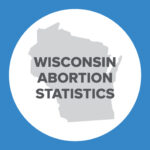New York Court Rules there is no “Right-to-Die”
By Andrea Arellano, former CLI intern
This September, a New York State court unanimously decided on an assisted suicide case and upheld state prohibitions on the practice of physician assisted suicide. The plaintiffs in Myers v Schneiderman consisted of patients with terminal diagnoses who, along with euthanasia-rights advocates, sought the establishment of a “right-to-die” with a physician’s aid by challenging the state’s penal code on manslaughter in the courts. Notably, ten disability rights organizations led by Not Dead Yet filed an amicus brief in support of the state’s attorney general. Despite strong efforts, the case failed to establish a “right-to-die” under state law and physician assisted suicide remains illegal. The threat to human life, presented by legalization of assisted suicide and euthanasia, will not reach New York in the immediate future. While this case can be considered a victory for human dignity, threats persist and remain present even in this case buried just beneath the surface.
The definition of manslaughter under New York state law proved central to the case as the plaintiffs sought the establishment of a “right-to-die” with physician assisted suicide and the legalization of such a practice. New York state defines aiding in the suicide of another as a criminal offense under its penal code. (New York Penal Code § 125.15 and § 120.30) Such a prohibition extends to physicians assisting a willing patient to induce death in the case of physician assisted suicide which poses an obstacle for euthanasia advocates who desire “aid in dying” to be classified as distinct from this code. To legalize the practice, euthanasia advocates must have manslaughter redefined to exclude cases of physician assisted suicide.
The plaintiffs made their argument against state law by pointing to the long-held right for patients to refuse medical care as grounds to extend patient rights to include acquiring a death-inducing substance in response to a terminal diagnosis. With an equal protection claim, the plaintiffs argued that because some patients can achieve death more quickly by refusing care than others, that those who would not die from withdrawn care did not receive equal protection under the law. This argument rightly did not convince the judges who drew a clear distinction between refusing care and requesting a lethal substance; the former presumes a right to reject bodily intervention and not a right to induce death.
The ruling affirms that there is no “right-to-die” with physician assistance in New York state, at least for now. Though the case failed to change state law, the concurring opinions reveal the contentious debate between legalizing euthanasia and protecting human life and possible grounds for future argument on the matter. For example, Judge Fahey and Judge Rivera both wrote concurring opinions but offered opposing understandings of euthanasia and its potential place in society. While both judges agreed with the majority decision of the court, Judge Rivera offered a perspective on individual rights and the need for legalized euthanasia to alleviate suffering, while Judge Fahey drew a strong defense for state interests in protecting human life, especially of the most vulnerable.
The tension between individual liberty and state interest proved to be a key point of disagreement with Judge Rivera arguing in support of the former and Judge Fahey taking the side of the latter. While Judge Rivera agreed to uphold the law, she expressed a firm view that the state has a limited interest in prohibiting access to assisted suicide relative to the need for individual rights, thus taking the opinion that a “right-to-die” did not have protection in the state law as is, but that such a right should exist. Such a perspective assumes that individuals should have great liberties when it comes to what Judge Rivera calls “deeply personal choices,” including the liberty to end one’s own life complete with medical assistance in the face of physical suffering. While this view might prove alarming to those who understand human life as fundamentally valuable removed from health or ability, Judge Fahey’s opinion offered a strong defense of life and rebuttal of these arguments that can give hope to those who see the threat to vulnerable human life. Judge Fahey defended the state’s interest in prohibiting physician-assisted suicide and expanded on the danger legalization poses to vulnerable human life and the medical profession. The two opinions reflect the radically different perspectives of physician assisted suicide. This case failed to establish a “right to die,” though the struggle to protect vulnerable human life continues in the courts as in society.
The Myers v. Schneiderman decision comes at a time when many states in the country find themselves reevaluating criminal prohibitions against physician assisted suicide. Though New York state law continues to define physician-assisted suicide as a criminal offense, many states in the country find themselves considering legalizing the practice to allow patients to seek out death-inducing drugs from a physician. These efforts have persisted for many years with limited success. Since 1994, there have been more than 200 legislative attempts in 36 states to legalize assisted suicide – almost all of which have failed. However, to date six states and Washington, D.C. have legalized the practice through various means. Euthanasia advocates likely will continue to seek legal protections through the courts, ballot initiatives, and legislation for physician assisted suicide or, as they often prefer to say, “death-with-dignity.”
October 10th is World Mental Health Day and September marked Suicide Prevention Awareness Month. Various organizations spend this time campaigning to bring suicide prevention to the national attention through sharing resources and information to the public. They drive the key message that suicide is preventable and should be prevented. However, as these efforts continue to reach people and support them to combat the epidemic, the “right-to-die” movement poses a challenge to the idea that suicide should absolutely be prevented by trying to redefine and even obscure suicide through euphemisms. The New York case decision is an example of states demonstrating a legitimate state interest in protecting life, though the battle continues.
Andrea Arellano was a former CLI intern.























